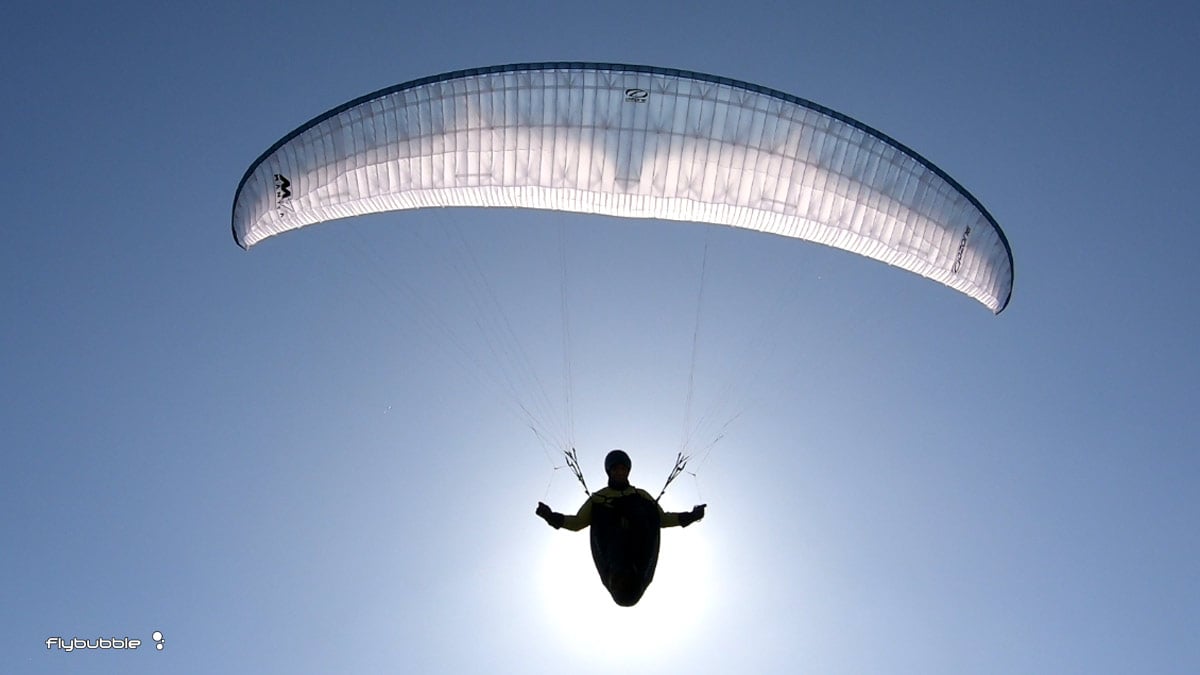
"The M7 is undoubtedly the best 3-line wing we have ever produced," says Ozone. "A completely new design incorporating the latest technology in a tight, compact, 3-line package. The profile, planform, and arc are all evolved from the Zeno, and the aspect ratio is a more moderate 6.5.
It is the ideal wing for experienced pilots stepping up to the D class who want the performance and pleasure of a modern 2-liner, but with more comfort, security, and confidence. Solidity at full speed is the best we ever made on a certified 3 liner.”
So what's it like to fly, and who should buy one?
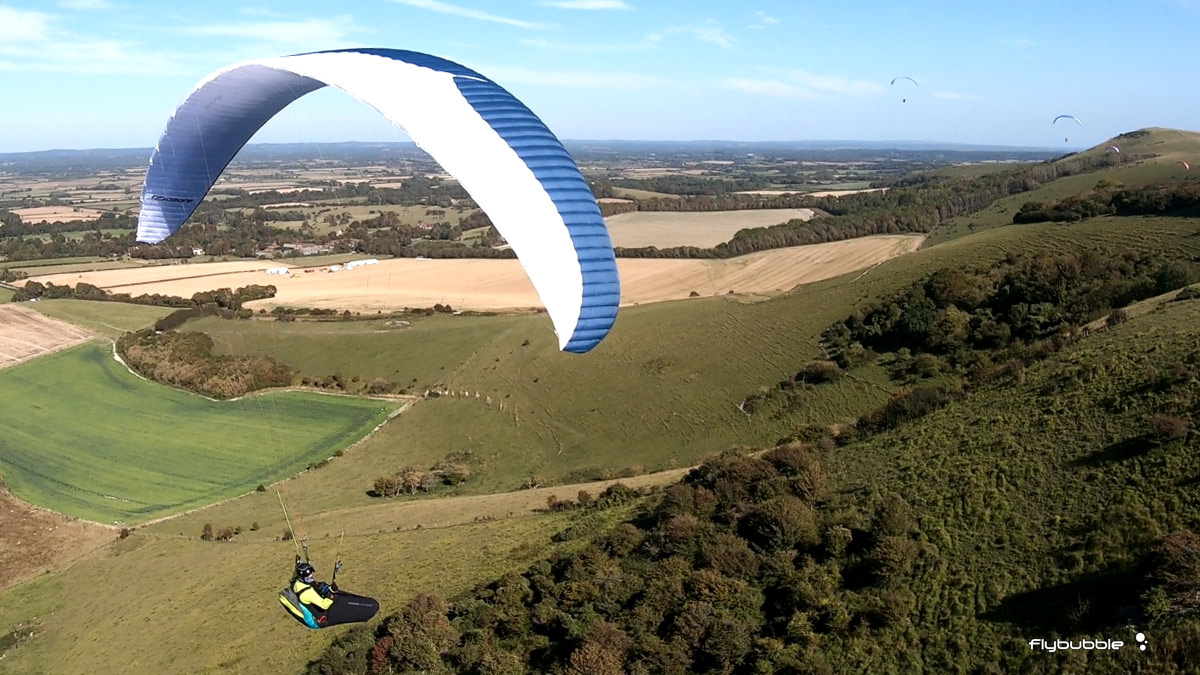
Ozone M7: background
Ozone had the Delta 2 (Flat Aspect Ratio of 6) and the M6 (AR 6.9). The pilot demand gap was already fairly big between those wings. Then Ozone brought out the Zeno, also AR 6.9 but a 2-liner with higher pilot demands than Mantra M6. Then the new Delta 3 (AR 6) offered lower pilot demands than Delta 2, making the ‘range gap’ between Ozone’s EN C and the two liner EN D even bigger.
The Mantra M7 (AR 6.5, rated EN D) offers lower pilot demands than M6, so it fits well in Ozone's range midway between the Delta 3 and Zeno.
The M7 was delivered with the new Ozone Glider Pack M (140L). At 1650 grams, it is bulky due to stiff material and design but it offers some nice features and seems durable. It filled up my Lightness 3 with little room to spare but it is a significant improvement on previous Ozone rucksacks, although carrying comfort could still be improved.
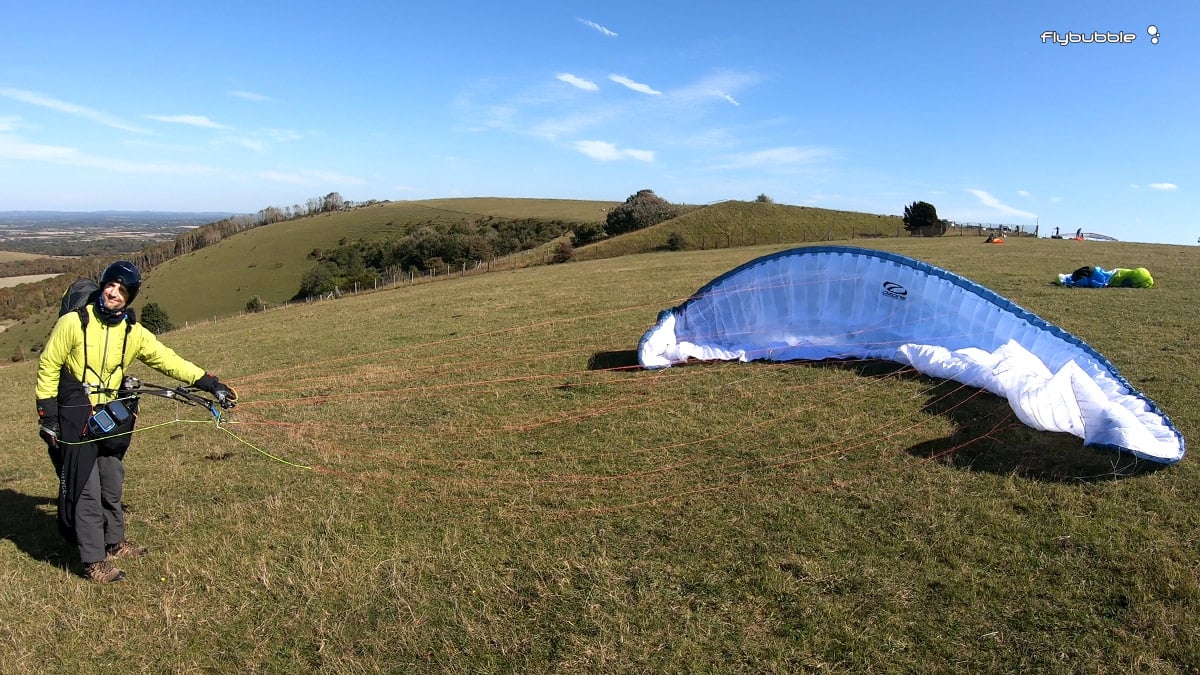
Ground handling
Inflation, launch and ground handling behaviour are important to me – it’s part of the fun of flying. How a wing behaves on the ground isn't always how it behaves in the air, but it's often a pretty good indicator of the wing's character. So I try out different techniques and test the wind coming from different angles, or launch from areas where the airflow is turbulent.
The M7 inflates fairly readily, considering the size of the cell openings--which are narrow, pretty typical for this level of wing--so getting the wing open and building a wall in moderate to strong winds is as expected.
On inflation, it requires a pretty high level of control on giving correct and symmetric input, especially to avoid one side coming about more than the other, causing the wing to rotate on its yaw axis resulting in an asymmetric collapse.
If the wing is well laid out into a nice breeze and your pull-up is good the wing comes up well, with not too much tendency to drop back from lower angles or 'scoop and dive' near the top of the zenith.
Overall I'd say the ground handling is about right for the level of wing it's meant to be (low D). It's less demanding to ground handle than most two liners but more demanding than most three liners I've tested in recent years.
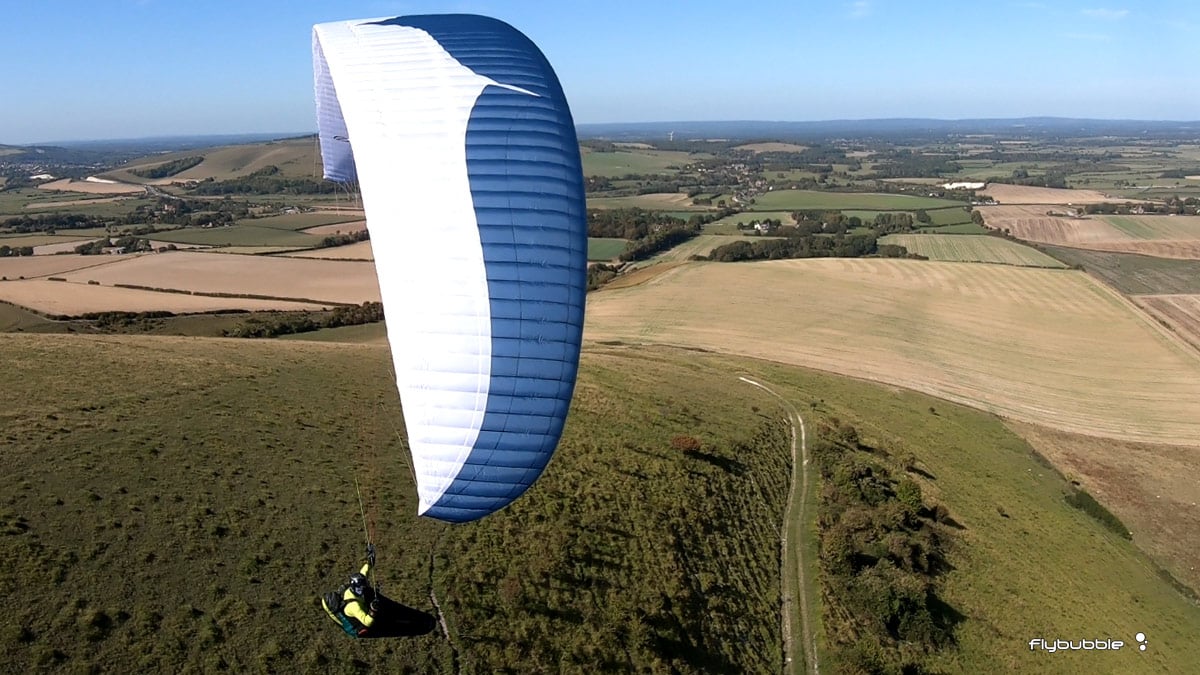
Handling / agility
Glider handling is a subjective thing and everyone has their personal 'Goldilocks zone': not too much, nor too little; just right. People can also mean different things when they talk about handling.
Some (surfers) are talking in terms of ‘feeling’. Not the feeling the wing transmits about the air through the brakes and lines, which I call feedback (more on this later). I mean the feeling you get back from the wing in turns, through the brakes and risers, as a result of your inputs, the energy it transmits back to you and also how much it makes you smile; the joy factor.
Most pilots say they don't want the handling to be too heavy, but they want to be able to feel what's going on through the brakes. Goldilocks, again! One pilot's ‘lovely and light’ brake pressure is another's ‘vague and mushy’. One's ‘heavy and stiff’ is another's ‘firm and direct’. Others (engineers) are talking about ‘brake authority’ i.e. how much the glider responds to specific amount of brake input i.e. an almost clinical measure of input X cm of brake equals Y degrees of turn in Z time. Some are primarily concerned about how responsive or agile the wing is i.e. how fast and tight can you turn it. When I talk about handling I'm thinking about all these things.
I find the brake pressure on the M7 moderate, if anything slightly on the firmer side, in relative terms. The feeling in terms of the handling, and energy is moderate, slightly dampened. The glider responds steadily to brake inputs. It is neither particularly agile nor slow.
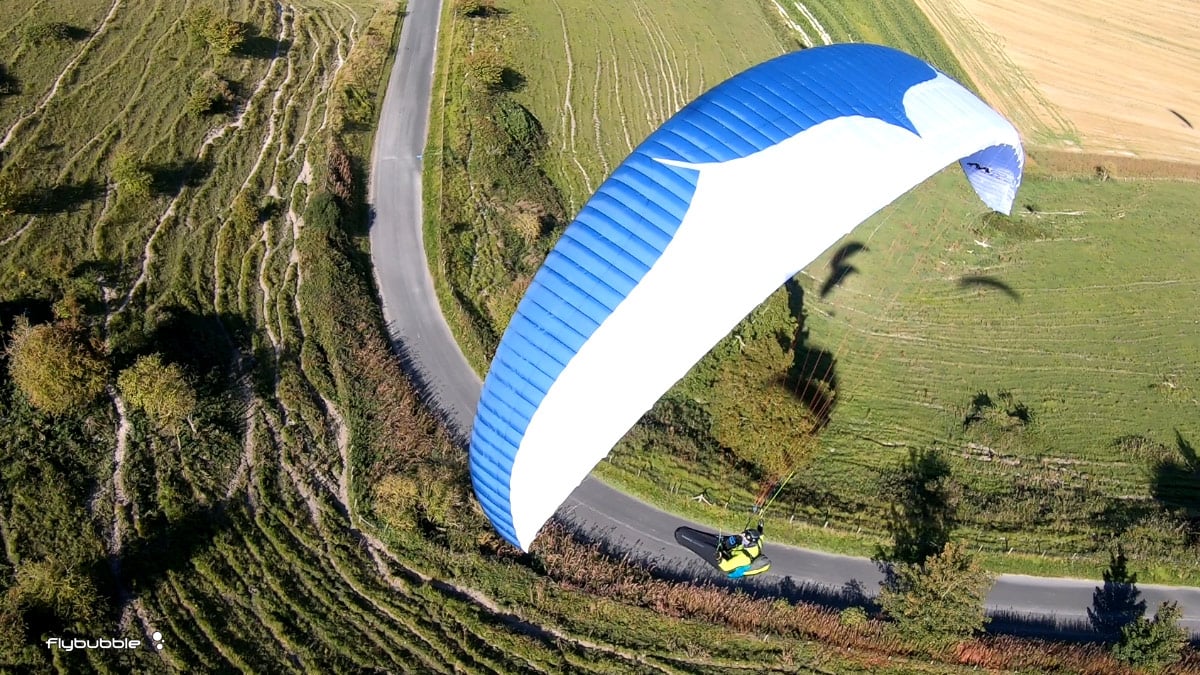
Ideal flying weight
I tested the wing at different loadings, for comparison, including near the top of the weight range. Some pilots are convinced that all wings--especially higher end wings--should be flown near or at the top of their recommended weight range by all pilots. I disagree. Many pilots have taken that advice and ended up with the wrong wing as a result. What's right for you might not necessarily be right or best for others.
If the manufacturer's recommended weight range is 15-20 kg, why limit yourself to only the top 5 kg just because that's what someone else prefers? Perhaps they prefer more dynamic handling, or prefer flying in strong conditions so don't mind the loss of sink rate?
From flying many wings of various sizes over the years, it's clear that some wings prefer to be flown in different parts of their weight ranges to get the best out of them, for you. Some do prefer to be heavier loaded, others prefer to be around the middle. Some fly very well even near the bottom of the weight range, which works well for those who prefer to fly in light conditions, which are usually smoother.
Normally I prefer to fly wings around the middle of their recommended weight range, for all-round best behaviour. However, if I flew the M7 then I would fly it near or at the top of its weight range to give me a more dynamic and agile feeling, rather than more docile and placid.
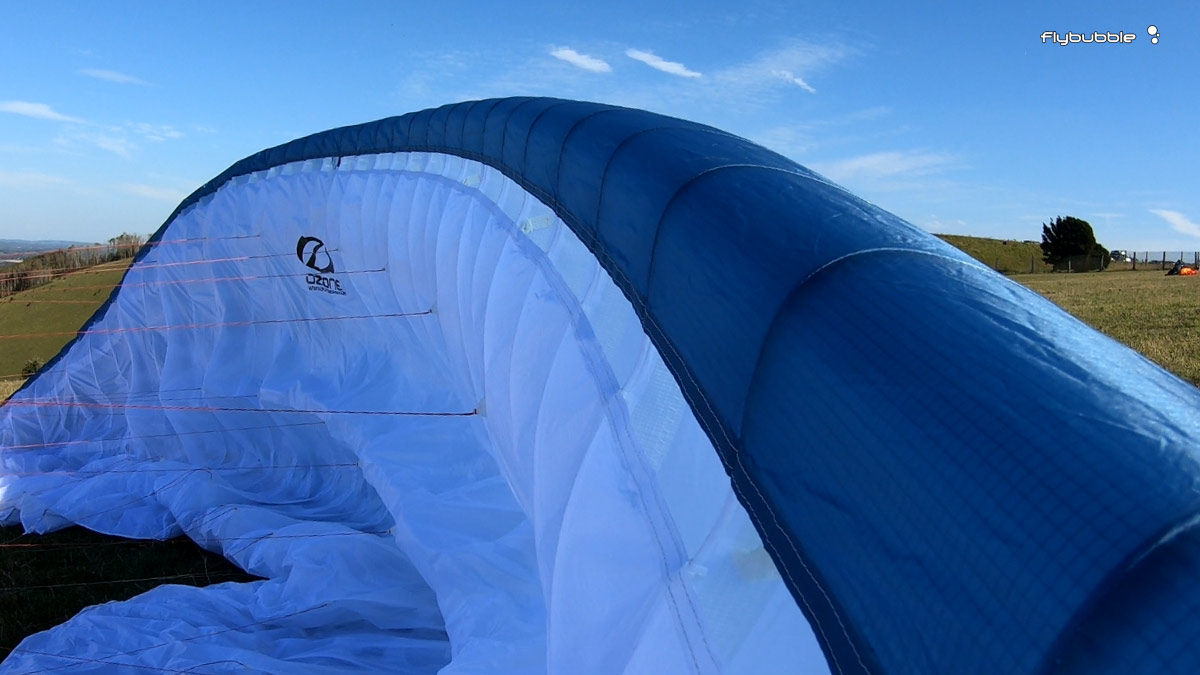
Ozone M7: feedback
The feedback from the M7 is rather dampened for a D wing. It is very pitch stable which leads to a slightly vague feeling: functional rather than pleasurable. I found myself looking up at the wing more than usual, not because the wing was making me nervous but because it wasn't talking to me. I prefer firm and direct feedback of information. The M7 is calmer than the M6.
Thermaling
It climbs well, good for the class. However, despite flying near the top of the weight range, I found the wing was hanging back on entering thermals. There's that delay you might expect from a lower rated wing.
Safety
"The M7 is certified EN D and aimed at EN D level pilots... " says Ozone, but “the level of comfort and security is closer to the class below. Extensive collapse testing has shown excellent recovery behaviour – better than the M6, with less tendency to cravat." Even so, it’s recommended for experienced pilots who fly at least 100 hrs per year, with recent SIV training.
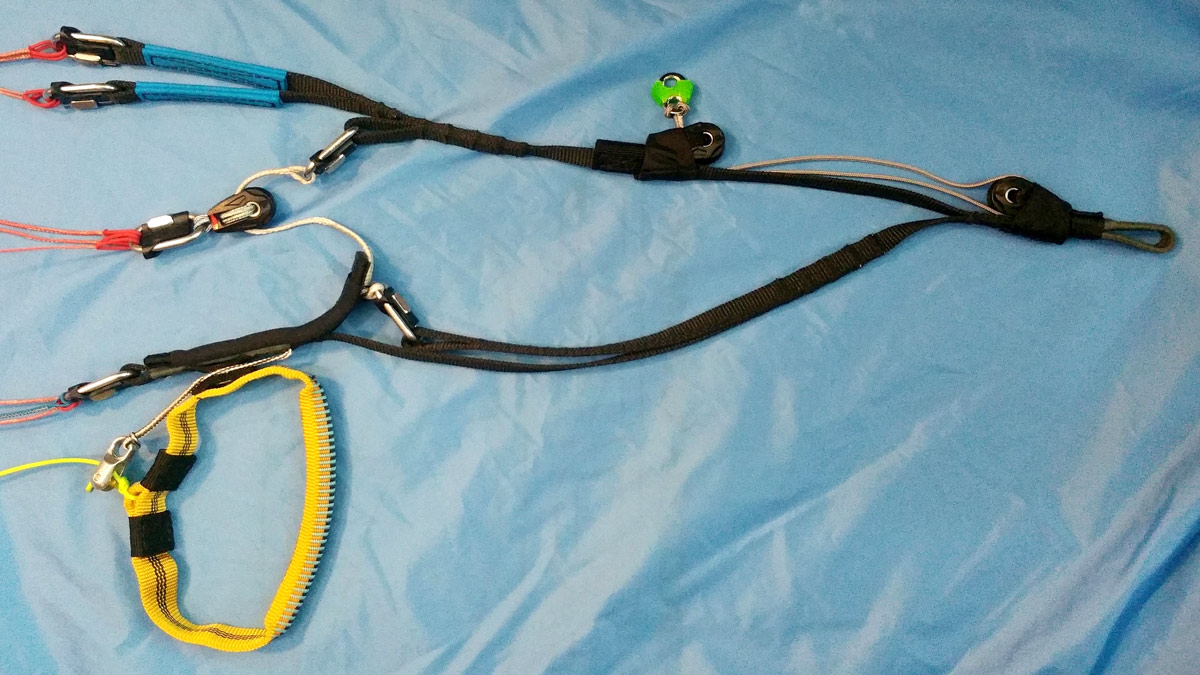
On speedbar
At full speed it is comfortable and undemanding with an effective rear riser control system. I like the unusual B/C connector system on the M7, with a simple pulley on the Bs carrying a thick dyneema line bridge from A to C. Intrigued by the design, I asked the Ozone team about them.
Russ Ogden explained “I am pretty much sold on riser control for most wings – although the effectiveness depends on the profile and tab positioning. It works well for all Ozone wings (ie, pulling the C’s solidifies the nose), but I have flown wings from other manufacturers and some of our own protos where it is not effective at all. It depends on the wing.”
Luc Armant added: “This riser system has been chosen in order to offer a speed system that offer the least drag possible and a riser control system that is placed high in the risers, in order to have the arms almost fully extended, like 2 liners.”
The choice of dyneema line is to guarantee a good strength over time. Most of the other fibers would age too quickly with repeated bending cycles into the pulley. We’ve designed this line as short as possible in order that its absolute shrinkage cannot be very significant. We’ve included a loop on the carabiner that the pilot can release in order to adjust the dyneema B line over time.”
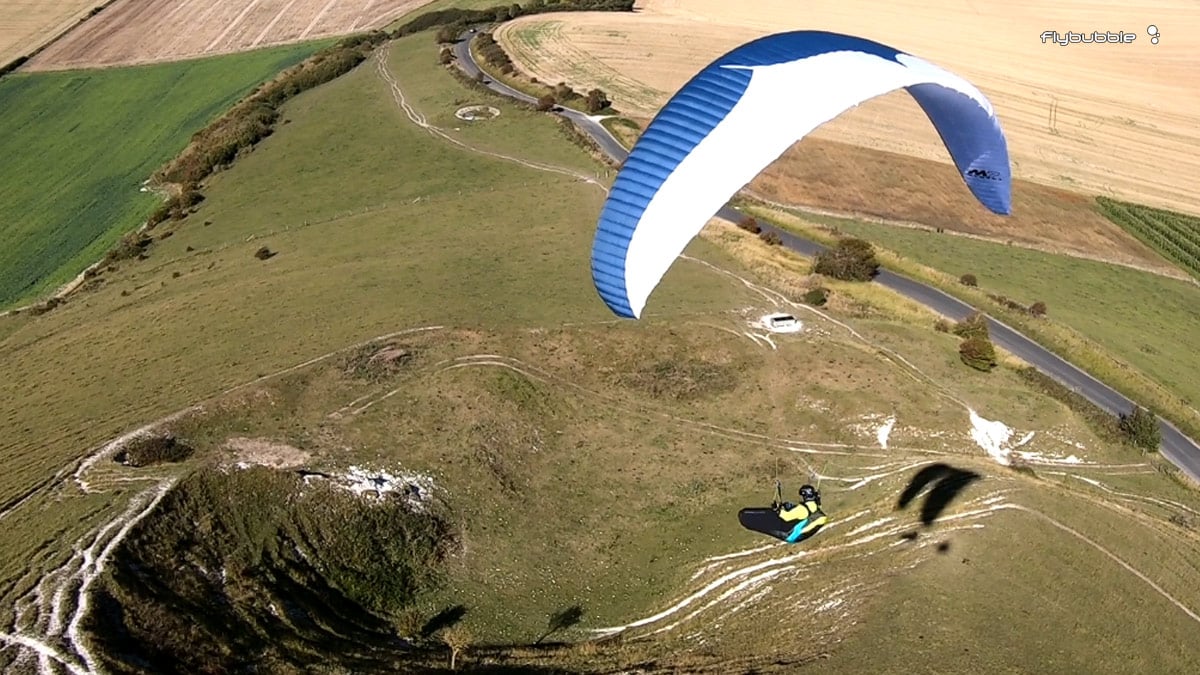
Flybubble vs Cross Country Magazine on the M7
For some fun, we go head-to-head with top reviewer Hugh Miller (read Hugh's review on XC mag)
XC: "Think C+, rather than D."
I'd say it has low D pilot demands, in terms of ground handling, general flying and SIV.
XC: "It turns tighter than its aspect ratio should allow–possibly even flatter and tighter than the Queen 2."
I don't agree. Turns seems pretty average for 6.5 AR to me, even when top loaded. If anything, the wing lacks a bit of speed and energy for the class.
XC: “Like the Delta 3, it’s very steady when entering climbs, with minimal pitch response.”
I agree, it is surprisingly dampened for the class.
XC: “For increased descent-rate, Ozone recommend pulling the outer-Cs rather than outer-As.”
I can confirm standard big ears are best avoided on this wing as they fight the pilot. The outer-Cs (tip stalls) are thankfully much better however not the best; more at risk of stall than some other wings.
XC: “If you’re coming from a competition wing you’ll miss the “sniffiness”, but you’ll delight in its tight, flat radius in punchy cores.”
I felt the M7 climbs pretty well in light to moderate thermals. It felt more suited to stronger, punchier climbs than weaker stuff.
XC: “I got used to thermalling the M7 one-handed on the inside brake. It seems to climb much better with the outside wing flying as fast as possible.”
Agreed. Unusually for a D wing, I was always feeling like "Come on, give me a bit more speed, more energy, more feedback!" This is despite me being loaded near the top of the weight range and flying in light conditions.
XC: “On glide: it’s also excellent. At full bar on the M7, you’ll be matching the two-liners who are racing more cagily on half-bar.”
I don't think so. If you are keeping up speed wise you'll be losing out on glide. That's certainly the experience I had. There is a performance gap with good current EN D 2-liners. Even more so with top CCC wings.
Similarly to Cross Country magazine, our leading edge plastic rods inverted on the review wing, causing a bad deformation. After some emails, Ozone sent out a modification pack. This relates to a safety note on early production units which they have corrected so this shouldn’t happen if you buy a new M7, but it’s something to be aware of for wings on the resale market.
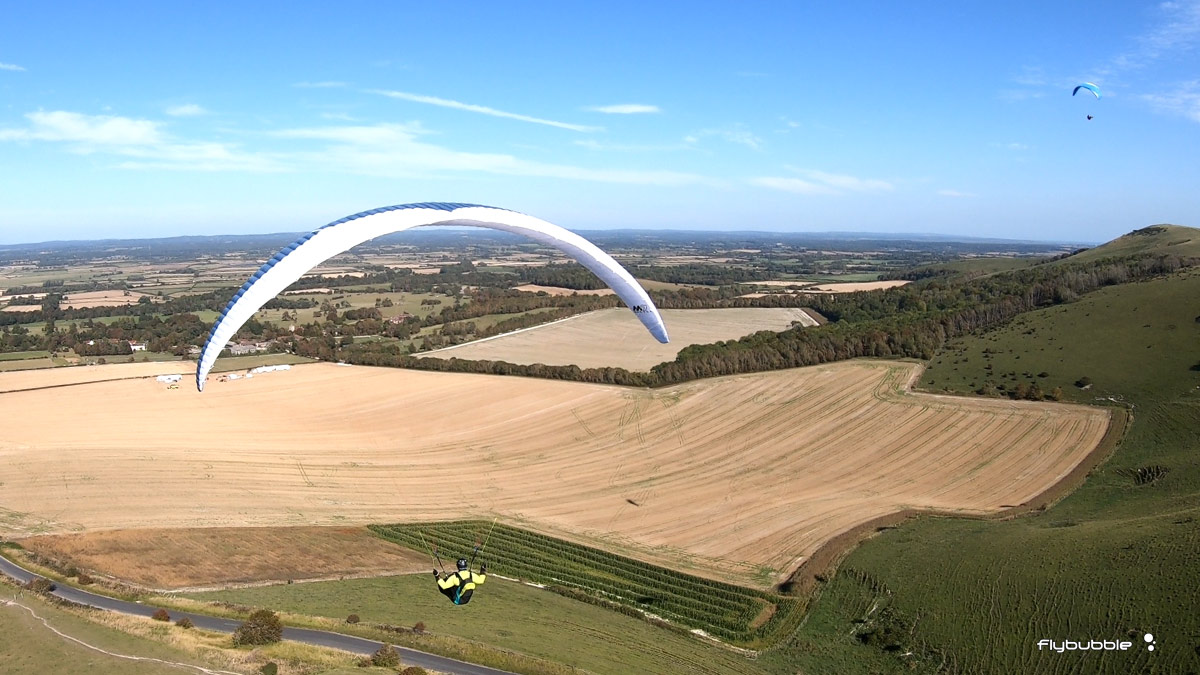
Who is the Ozone M7 for?
I see the M7 as being mainly a 'stepping stone' wing for progressing competition pilots who are frustrated at being out-gunned on their old C wing by high end 2 liners but don’t want to take the jump up to a wing like the Ozone Zeno or Gin Leopard.
However, for these pilots there exists the temptation of the Advance Omega Xalps 3 (easy two liner), and the very competitive latest generation of ‘high Cs’ (which are lower priced).
So the market for the M7 is narrow. Perhaps a more accessible Zeno, or a beefier Zeolite (Ozone's ultralight two liner), would have broadened the appeal.
If you’re an advanced pilot who is not obsessed with performance and you’re looking for a wing that is "coordinated, comfortable and reassuringly solid on full bar" then the M7 might suit you. It's a calm wing made for big air.
Reviewed by Carlo Borsattino
Mantra M7 MS (80-95 kg) flown at 93 / 88
Harness: Advance LIGHTNESS 3
We offer part-exchange deals for new wings and so may have an M7 available to buy second hand.
Ozone Mantra M7 review video
Enjoy some scenic soaring on the M7...
Brought to you by Flybubble
Like what we do? The best way to thank and support us is to buy gear from us and recommend us to others. Review our service on Trustpilot and our products on Flybubble Shop. You can also subscribe to Flybubble Patreon. Thank you!

